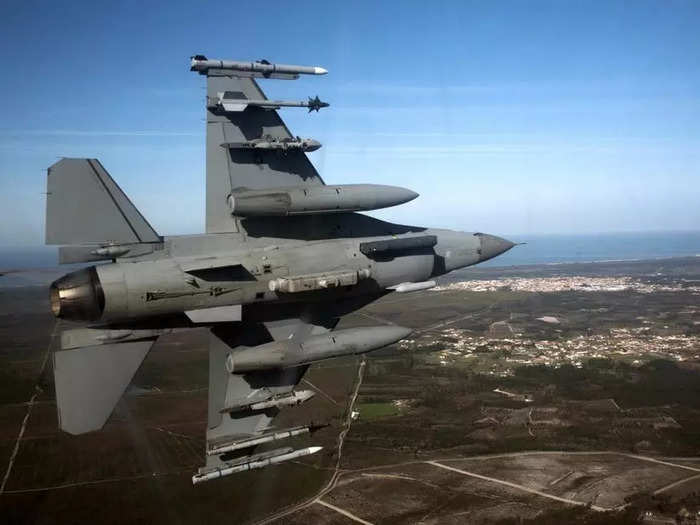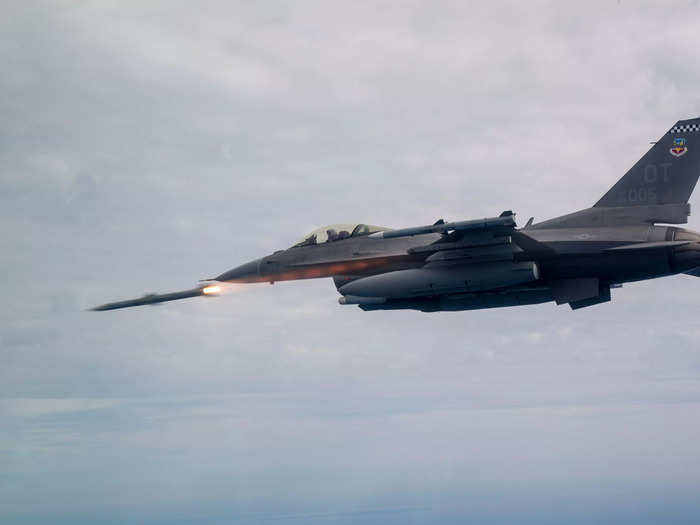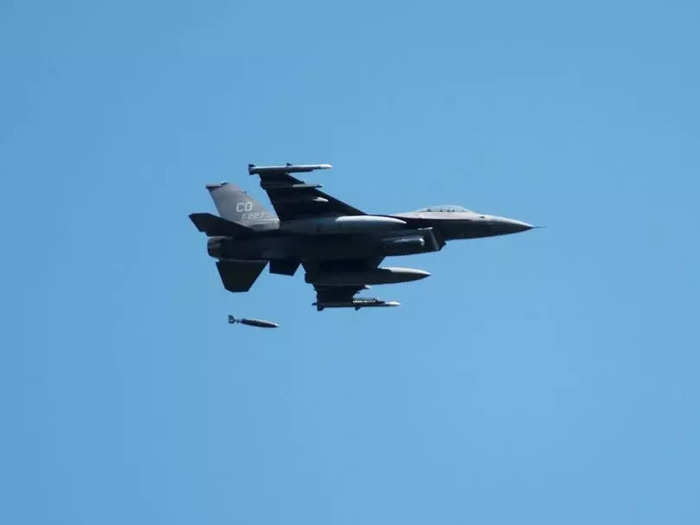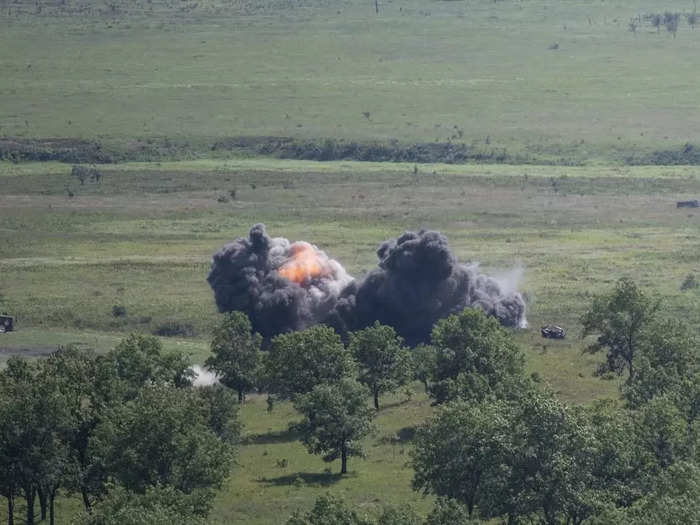Ukrainian President Volodymyr Zelenskyy sits in an F-16 fighter jet.Mads Claus Rasmussen/Ritzau Scanpix/AFP via Getty Images
- Ukraine is betting on the powerful F-16 fighter jet to give them a leg-up in the war against Russia.
- The F-16 Fighting Falcon can hit speeds of up to 1,500 miles per hour — twice the speed of sound.
Late last year, Ukrainian pilots shifted from flight simulators to training on actual F-16 fighter jets, a combat aircraft that the country hopes will secure an edge in the war with Russia.
Ukraine has long sought to add the Western fighter jet to its diminished fighter fleet of many Soviet-made planes like the Mikoyan MiG-29 Fulcrums and Sukhoi Su-27 Flankers. Open source researchers have found evidence that Ukraine has lost at least 71 fighter jets since the war's start.
Though the F-16 isn't the newest jet the US has, it's a still valuable and versatile asset in Ukraine's arsenal, and will help defend Ukraine's airspace and more effectively fire US-designed missiles.
The F-16 can travel at twice the speed of sound.
An F-16 Fighting Falcon departs Yokota Air Base, Japan. US Air Force photo by Yasuo Osakabe/Released
It can clock speeds of up to 1,500 miles per hour — or twice the speed of sound. The F-16 features an afterburner that produces a second stage of thrust used in takeoff, combat maneuvers, and supersonic flight.
It's armed with bombs, missiles, and a multibarrel cannon.
An F-16 Fighting Falcon banks left over Leiria, Portugal. US Air Force photo by Senior Airman Chanceler Nardone
The F-16 can carry armaments needed for aerial combat or ground attack. It can strike enemy positions with 2,000-pound bombs, and can attack other aircraft with missiles like the AIM-9 Sidewinder and the AIM-120 Advanced Medium-Range Air-to-Air Missile, both mainstay weapons for air-to-air combat.
It's also armed with a 20mm multibarrel cannon.
Its missiles are 'fire and forget' weapons that home in on their targets.
An F-16C Fighting Falcon assigned to the 85th Test Evaluation Squadron shoots an AIM-120 Advanced Medium-Range Air-to-Air missile (AMRAAM). US Air Force photo by Senior Airman Joshua Hoskins
The missile's guidance systems guide it to its target, allowing the pilot to perform flight maneuvers to evade enemy fire.
The F-16's external mounts can carry up to six air-to-air missiles, conventional air-to-air and air-to-surface munitions, and electronic countermeasure pods.
It can target forces on the ground.
An Air Force F-16 Fighting Falcon drops 500-pound Joint Direct Attack Munitions during training over Fort McCoy, Wisconsin. Kevin Clark, Fort McCoy Multimedia/Visual Information Office
But when it does hit its target, JDAM bombs can pack a punch.
A 500-pound Joint Direct Attack Munition explodes on a target in the impact area after being dropped from an Air Force F-16 Fighting Falcon. Kevin Clark, Fort McCoy Multimedia/Visual Information Office
Russian maintains formidable air defenses that threaten Ukraine's fighters anywhere near the frontlines. They will also menace F-16s when they arrive.
The F-16 won't provide Ukraine the air superiority over Russia it hoped for, it could at least level the playing field. They also are designed to fire weapons that can blind Russia's air defenses, like the AGM-88 HARM that home in on radars, as BI's Jake Epstein has reported.
"While F-16s are by no means a wonder weapon that will turn the tide of the war, they will help Ukraine adopt more-Western styles of warfighting — or force it to —and help its military cooperate better with those of NATO," Brynn Tannehill, now a technical analyst with the Santa Monica-based think tank, RAND Corporation, wrote in a post for The RAND Blog in May 2023.
Tannehill added: "The decision to give Ukraine F-16s is not about helping it survive the next phase of the war, but helping it ensure its sovereignty in the long term."





